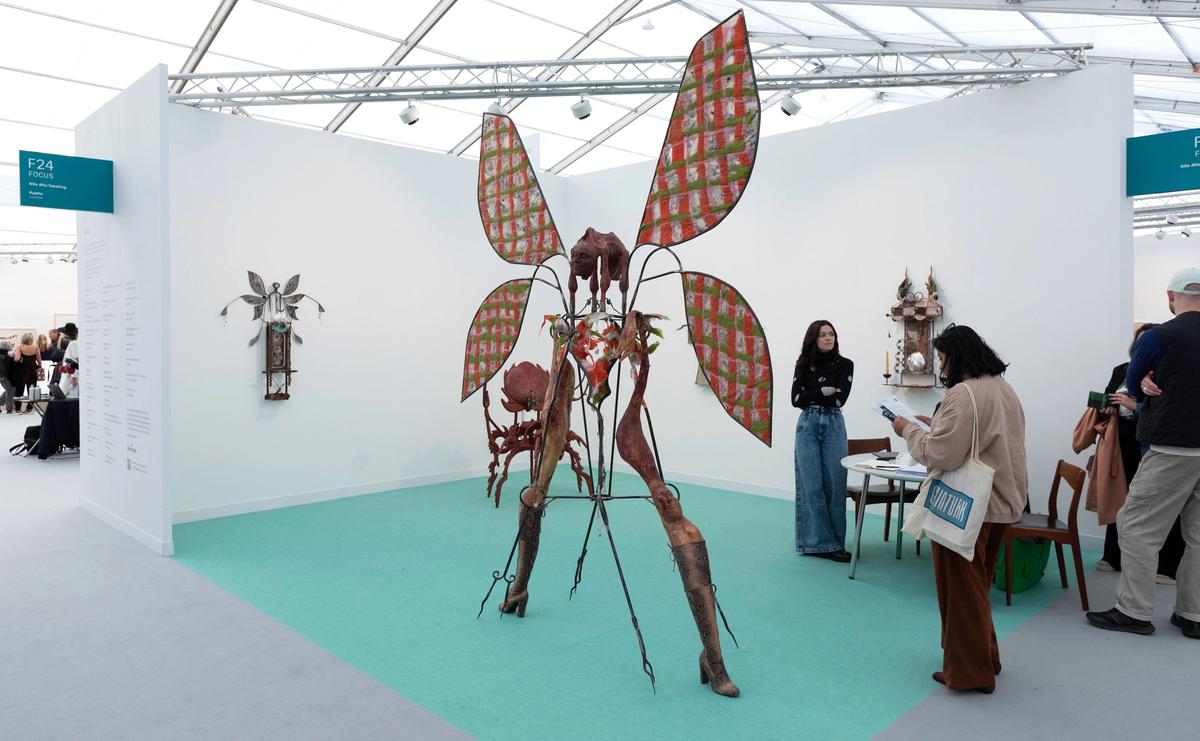For the first time, Focus, Frieze London’s dedicated section for emerging galleries, is not at the furthest end of the tent but close to the entrance. And the 34 galleries in the section have more than justified the decision to bring them front and centre. In a year in which most agree that the wider fair is low on risk and experimentation, Focus characteristically offers a refreshing dynamism. Core to this year’s section, and to the works selected here, is a geopolitical awareness allied to unbridled animation.
Nils Alix-Tabeling
Public
Hybrid bodies dominate Alix-Tabeling’s presentation (pictured above). The Paris-born artist’s two standing sculptures and three wall-based works explore queerness and paganism, particularly in relation to a temple in Montbuoy in France where water deities were once worshipped. Alix-Tabeling’s La déesse de Montbouy (the goddess of Montbouy, 2024) is a reimagining of the votive offerings that would have been left at the site: a winged sprite with a double face built around a metal armature, with river pearls gleaming from strings of goat innards and strange limbs extending into thigh-high snakeskin boots. The latter is a clear reference to drag, consistent with the artist’s regular foregrounding of queer bodies.
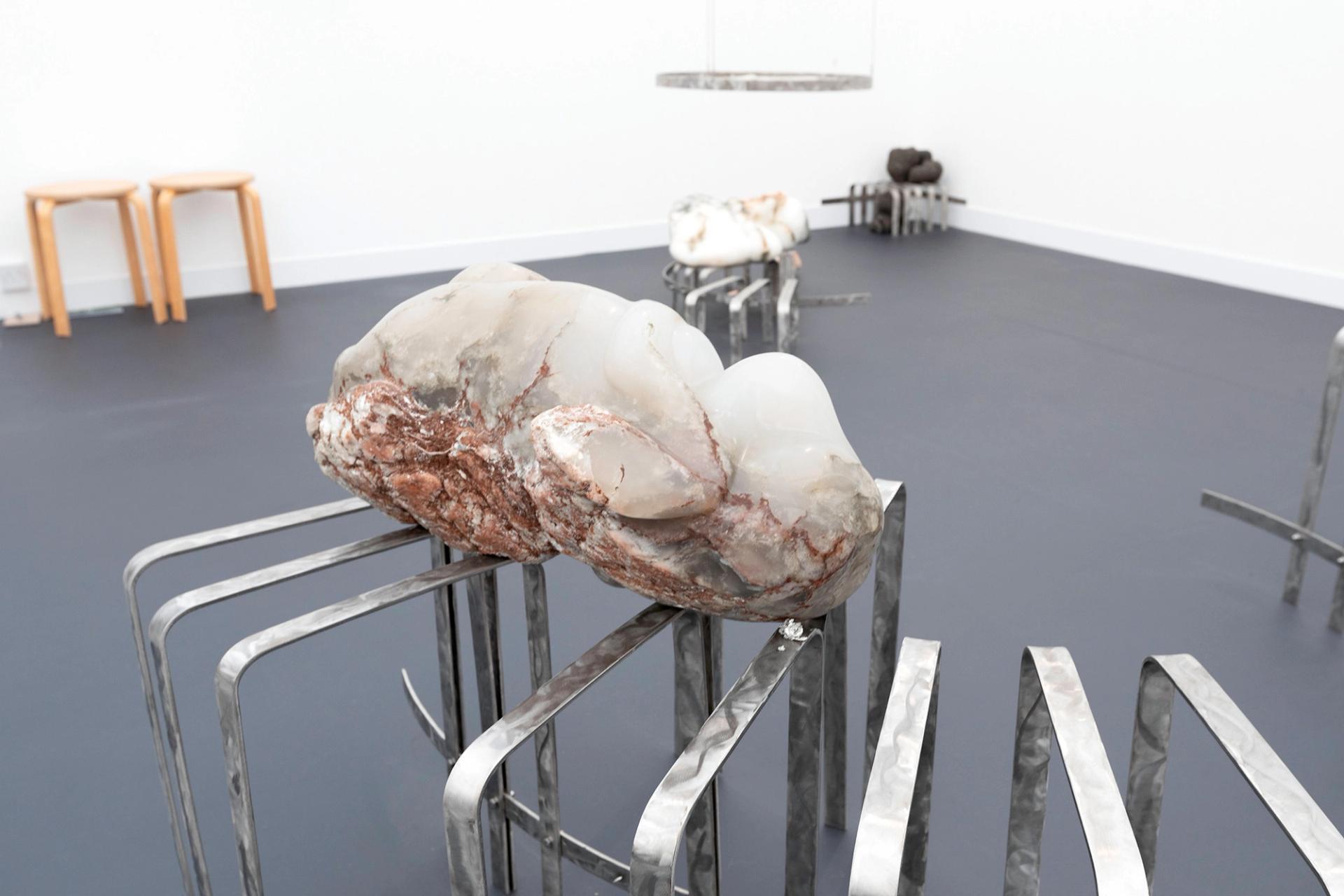
Hannah Morgan at Xxijra Hi © David Owens
Hannah Morgan
Xxijra Hii
Morgan’s poetic alabaster Animula sculptures hint at bodies and the microbes within them, while emphasising the stone’s distinctive materiality. Deliberately choosing alabaster rejected by conventional sculptors because of its imperfections, Morgan makes forms that wear the dirtier seams of the stone almost like scars. Sitting in and around handworked steel structures burnished with delicate marks so that they resemble drawings, they appear caught between states, partly informed by the post-humanist writings of Rosi Braidotti and Donna Haraway. The series draws on research into the Moray Firth caves in Scotland and the cartography of mines; hanging sculptures feature flat alabaster forms resembling models of landscapes, with apertures evoking holes in the land.

Hamedine Kane at Selebe Yoon © David Owens
Hamedine Kane
Selebe Yoon
Dakar and Paris-based Kane’s work is a homage to the Black American writers who spent time in Paris, as visitors or exiles, including James Baldwin, Langston Hughes and Maya Angelou. The writers are depicted in episodic drawings in pencil on cloth that include quotes and textile patterns. Woodcuts of book covers abound, while some of the cloths are draped over or stretched onto a wooden construction in which visitors are invited to sit and read books placed on the floor. The makeshift structure evokes shelters in Senegal but also those in the refugee camp in Calais, France—so the emphasis on displaced and migrating writers is more than a straightforward homage.
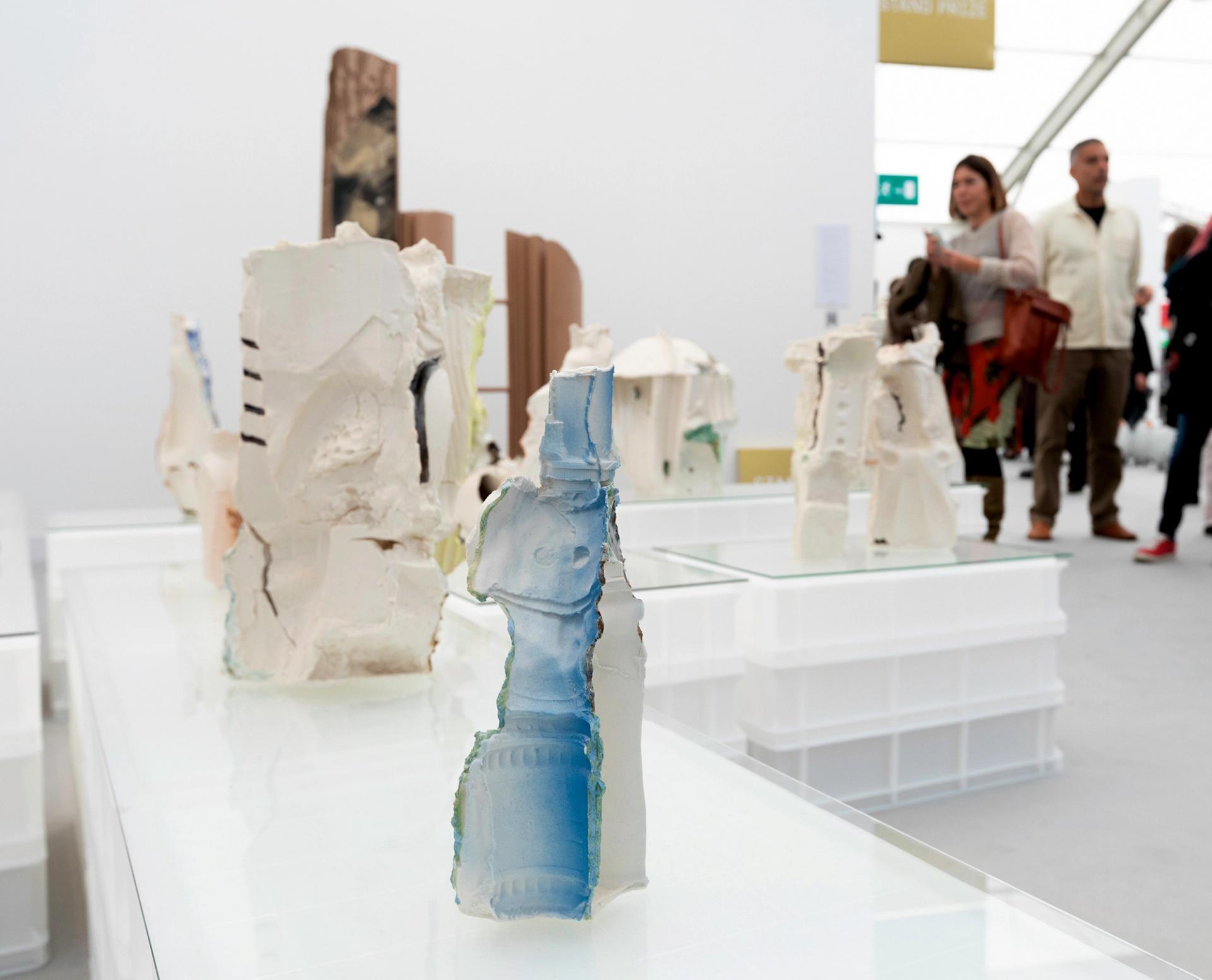
CFGNY at Hot Wheels © David Owens
CFGNY
Hot Wheels (Frieze Focus Stand Prize winner)
The four-person New York collective CFGNY (Concept Foreign Garments New York or Cute Fucking Gay New York)—riffs on the history of the movement of materials and, by implication, people. The group gathers dollar-store tchotchkes and casts them into lumpily awkward porcelain mutants with gorgeously delicate glazes, an allusion to the material’s history as an Asian tradition adopted, or bastardised, in Europe. Meanwhile, constructions in cardboard—chosen for its evocation of import and export—depict fragments of colonial-style US buildings. On them are passages from paintings by Turner and Constable rendered by the group in charcoal—a detail symbolic of Romanticism’s role in the foundation of American settler origin myths.
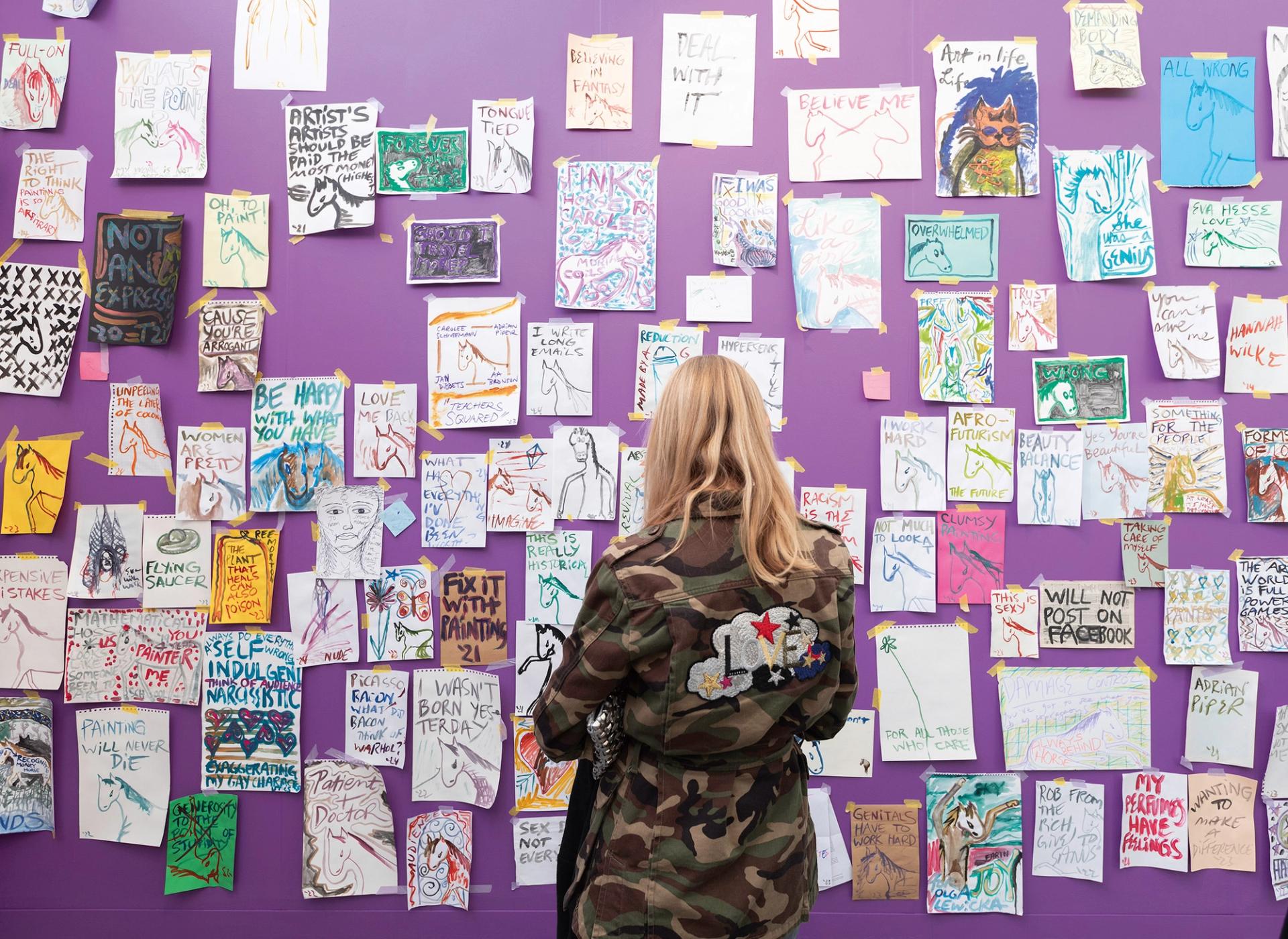
Sands Murray-Wassink at diez © David Owens
Sands Murray-Wassink
diez
Murray-Wassink’s installation features hundreds of confessional, defiant and funny watercolours with quickly drawn images and text, selected from 3,000 amassed over a decade. He explores his queer identity, his bipolarism and his debt to great female artists including Carolee Schneemann, Hannah Wilke, Adrian Piper and Eva Hesse. Their names appear in the works on paper, held up with masking tape around the stand. Equine forms dominate the imagery—a nod to the animal’s wildness, but also to a childhood experience in which the artist expressed his wish to be a girl and was encouraged not to draw horses as they were feminine symbols.
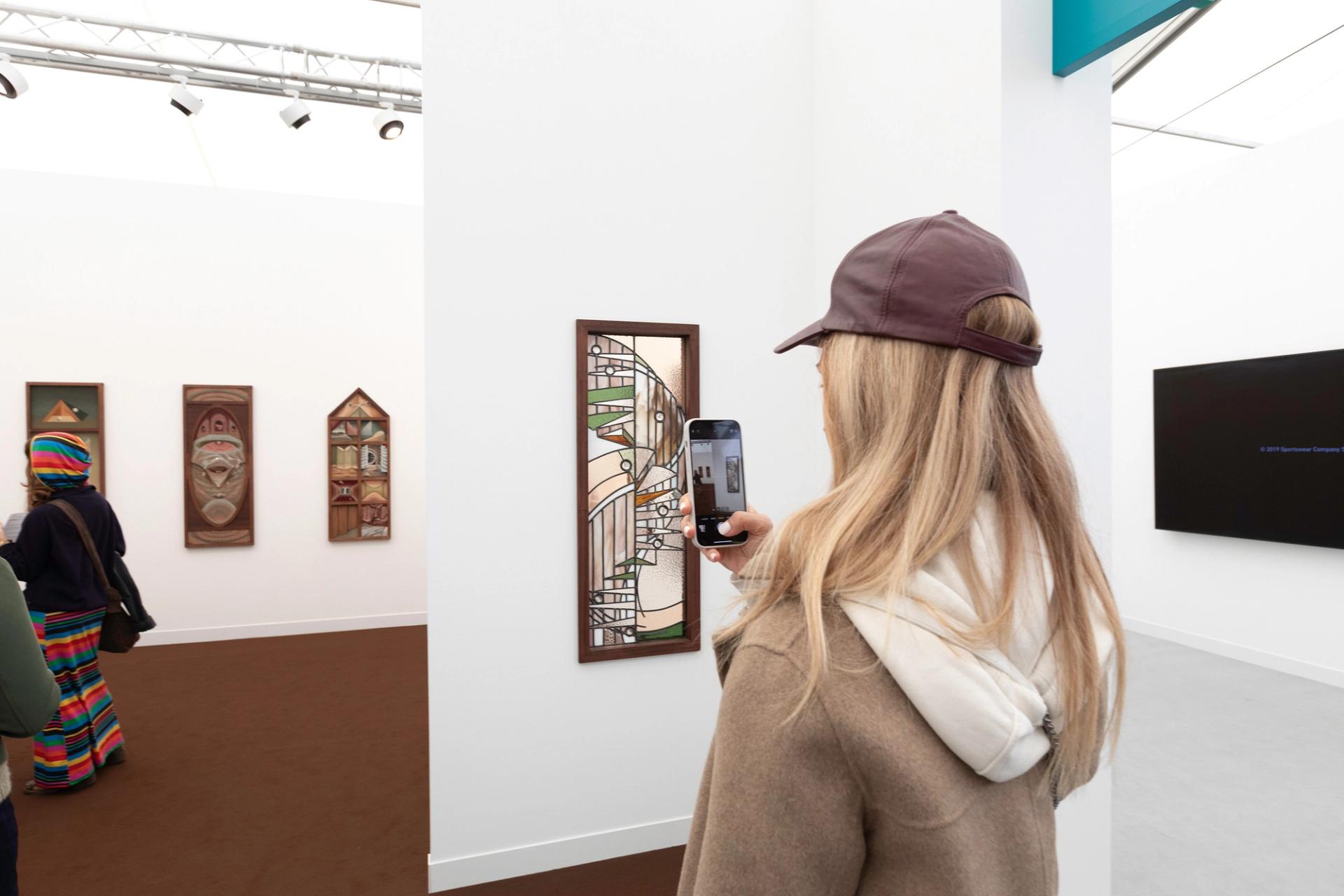
Charlotte Edey at Ginny on Frederick © David Owens
Charlotte Edey
Ginny on Frederick
Stained-glass panels are at the threshold to Charlotte Edey’s Thin Places—wooden constructions housing compartmentalised images made with oil pastel and embroidered beadwork. The imagery captures a dialogue between interior and exterior worlds; skies with moons, staircases and rooms pregnant with psychic intensity evoke the spaces found in the paintings of Surrealists like Remedios Varo and Dorothea Tanning. Edey’s images are mostly unpeopled but a bodily presence looms large, with ribbon-like arms and hands, and openings that could be orifices as much as architectural apertures. Indeed, circles—moons, glass orbs or bubbles, clock faces—are a consistent rhythm through Edey’s atmospheric universe.


